Say the name Christian Dior and most people will have immediate associations: Paris, hourglass femininity, Frenchness, glamour, Hollywood, luxury, and perhaps most importantly, the 1950s. For most of us, the idea of Paris in the 1950s is glamorous, informed by Richard Avedon’s black-and-white photography, Audrey Hepburn in Funny Face (the original Emily in Paris), and of course, the mythology of Dior and its whittled waists and full skirts, a look that travelled the world and came to define the decade’s image of post-war women, from Old Hollywood stars to all-American housewives.
It made sense, then, that Maria Grazia Chiuri would want to examine the decade much deeper with her latest collection. It is, after all, the era most commonly associated with Christian Dior, who showed his era-defining ’New Look’ in 1947 and died a decade later. For Maria Grazia, though, it isn’t simply the silhouettes of clothes that draw her to the decade. In 1944, French women were given the right to vote, and in 1949, Simone de Beauvoir’s seminal feminist text The Second Sex triggered an intellectual revolution that changed the course of so many women’s lives. A new generation of women was redefining post-war life for themselves, women like the beatnik Queen of the Left Bank, Juliette Greco, the singer-artist-actress usually found at the Café de Flore; Edith Piaf, the gutsy chanteuse rumoured to have been let off for murder because it was a crime of passion; and even Catherine Dior, the couturier’s sister who survived a concentration camp to become a successful florist after the war.
These three women provided the blueprint for MGC’s latest collection, a sort of unravelling of the primness of the 50s, and an antidote to the idea that Parisian women were just standing around looking glamorous, as Richard Avedon’s black-and-white photographs would have you believe. In fact, they were doing stuff! Singing about existentialism, running businesses, writing books, creating art! They lived in a Paris that was dark and edgy, a far cry from the cartoonish glamour of Avedon, Audrey et al. They struggled, suffered, survived — just like so many women today — and rebuilt the world around them to reflect their independence. Maria Grazia decided to give them something wear for disrupting notions of femininity.
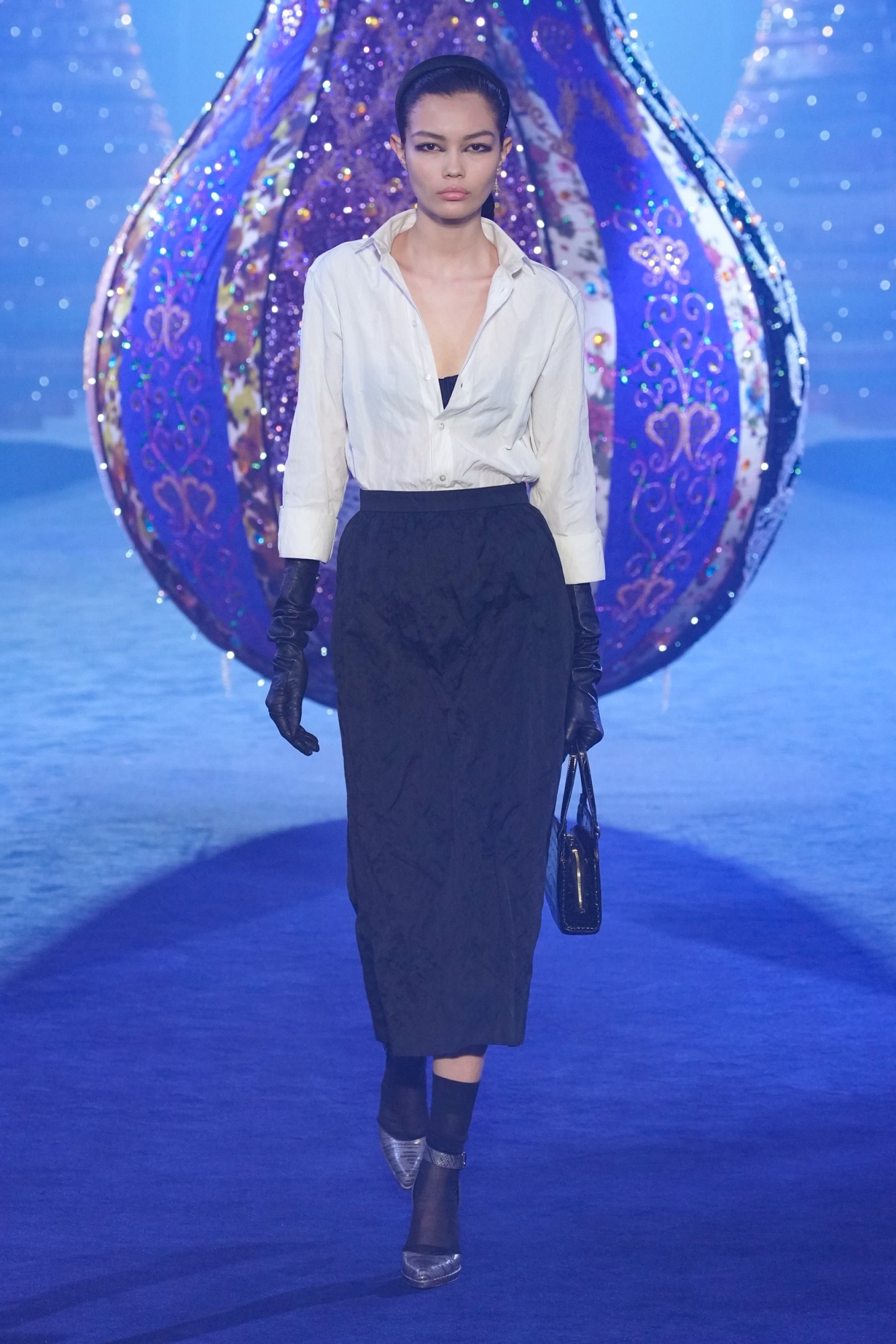
There was something great about the classic archetypes of the 50s woman, perhaps even the quintessential idea of the Don’t Worry Darling housewife — the damask floral skirts, the little blouson shirts, the nipped waists, gloves and top-handled lady bags — given a rawer, imperfect edge. A majority of the pieces here came in purposefully crinkled versions of original Dior fabrics — duchesse satin, pied de poule houndtooth, moiré — almost as if those 50s housewives discovered Simone de Beauvoir and existentialism, and decided not to get out of bed. Florals came mottled and blurred. The hourglass silhouettes were looser than the original boned-and-corseted New Look, less pin-sharp sculpture and more adaptable to a woman’s curved, courtesy of plenty of belts, clever gilets and technical fabrics. In fact, so much of this collection felt like real-life clothes that would flatter a woman’s body — which, in today’s fashion landscape, almost feels radical in and of itself.
“It’s a couture reference with the prêt-à-porter attitude,” Maria Grazia explained in a preview. She added that it’s taken her time to really understand Paris, and its complex history, having arrived with the same references as the rest of the world when it comes Paris in the post-war period. “This is probably my most French collection yet, but with a very Italian approach, because everything is about the construction and materials.”
Dior history buffs will know that the 50s ended with the arrival of an extremely young Yves Saint Laurent at the helm of the house, following Monsieur Dior’s death. Except, he was fired just two years later for his all-black Beatnik-inspired collection of black crocodile and fur jackets, inspired by the likes of Juliette Graco and her existentialist circle. There were plenty of sombre black tributes in Maria Grazia’s collection, too, which helped give it all a much moodier and cooler edge. A handful of all-black looks came with Stephen Jones baseball caps that looked like jaunty berets from afar. As far as redefining the Frenchness, it summed up a collection that offered a more nuanced view on the stereotypes and hallmarks of Dior. Maria Grazia’s dive into existentialism certainly paid off.


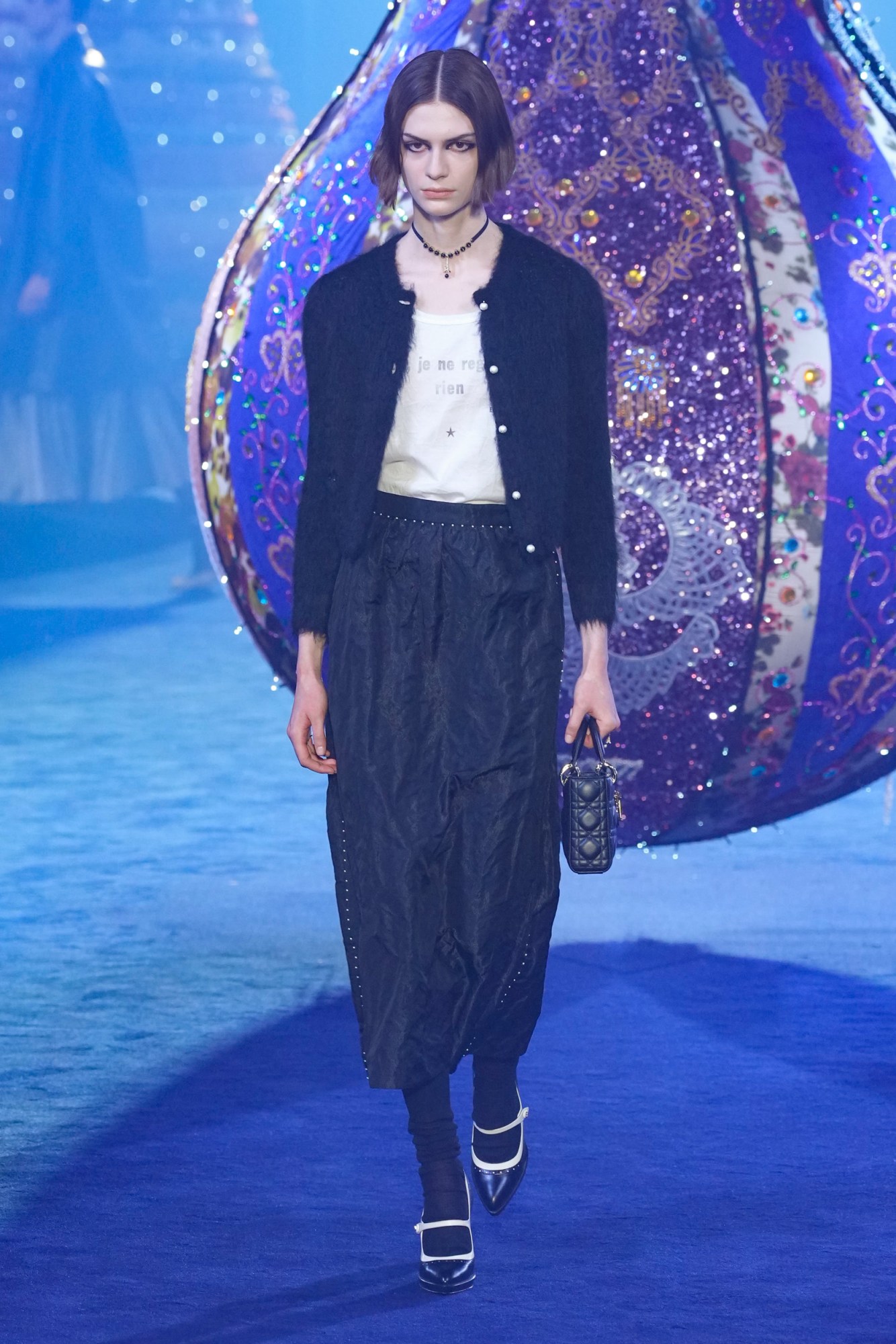
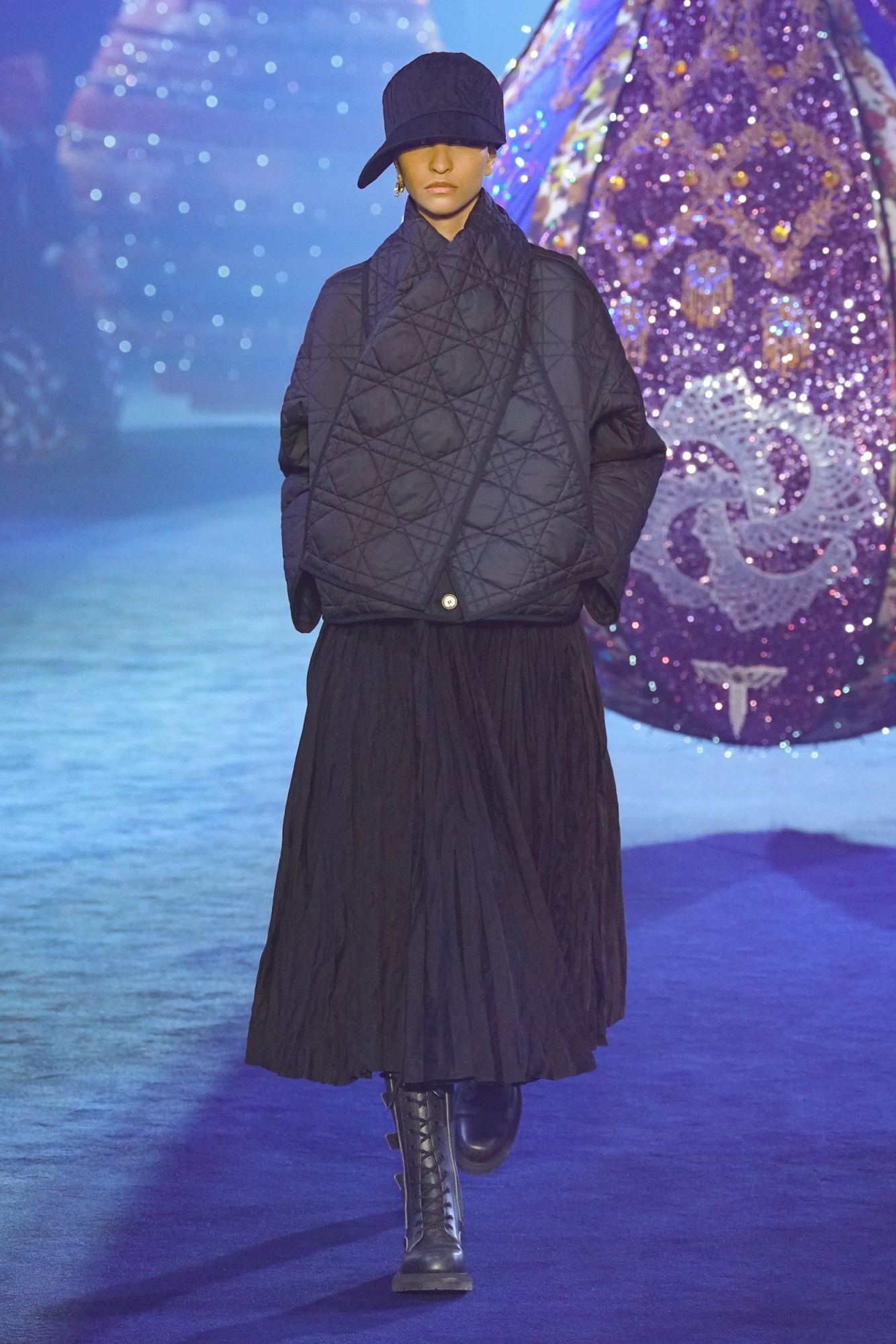
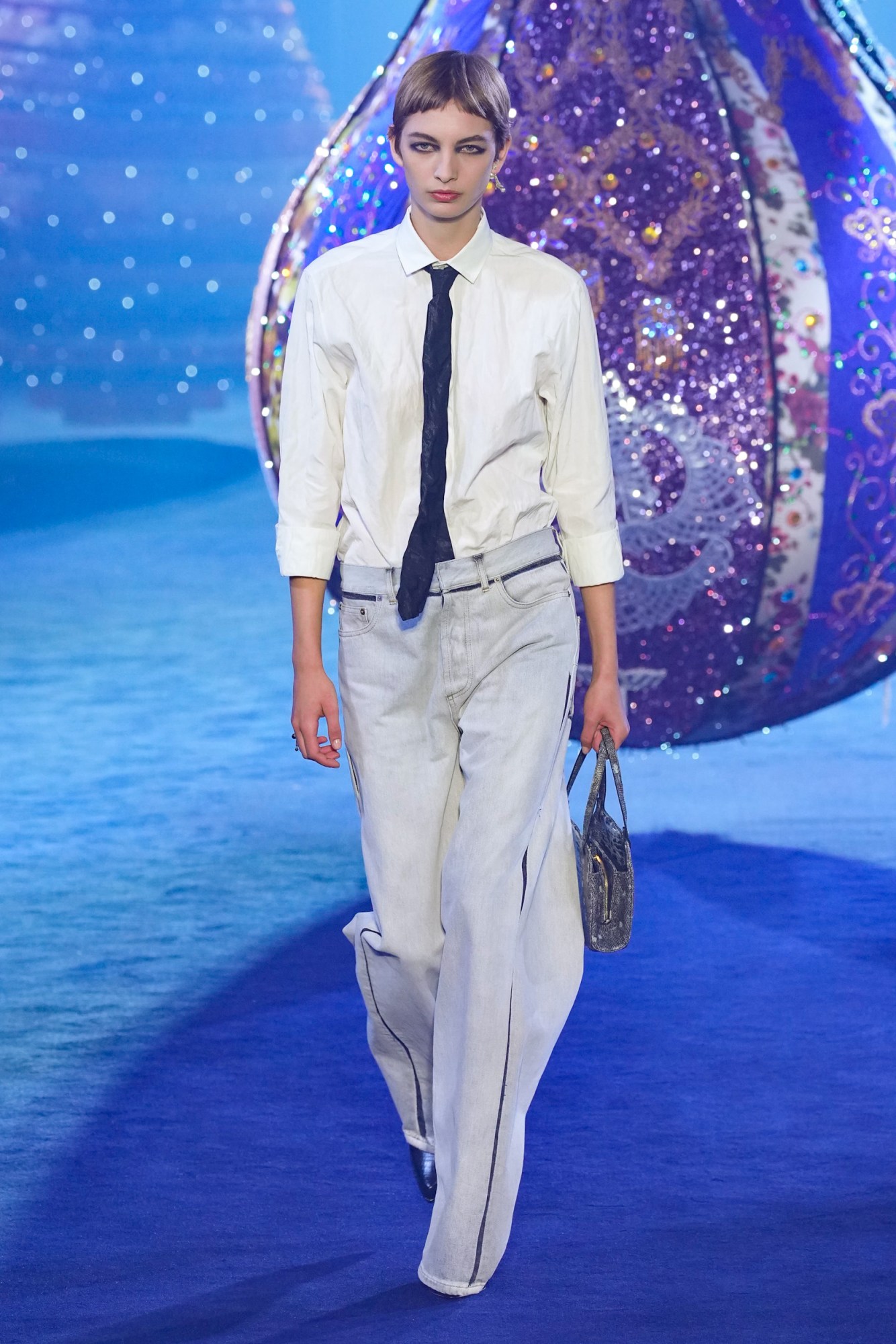
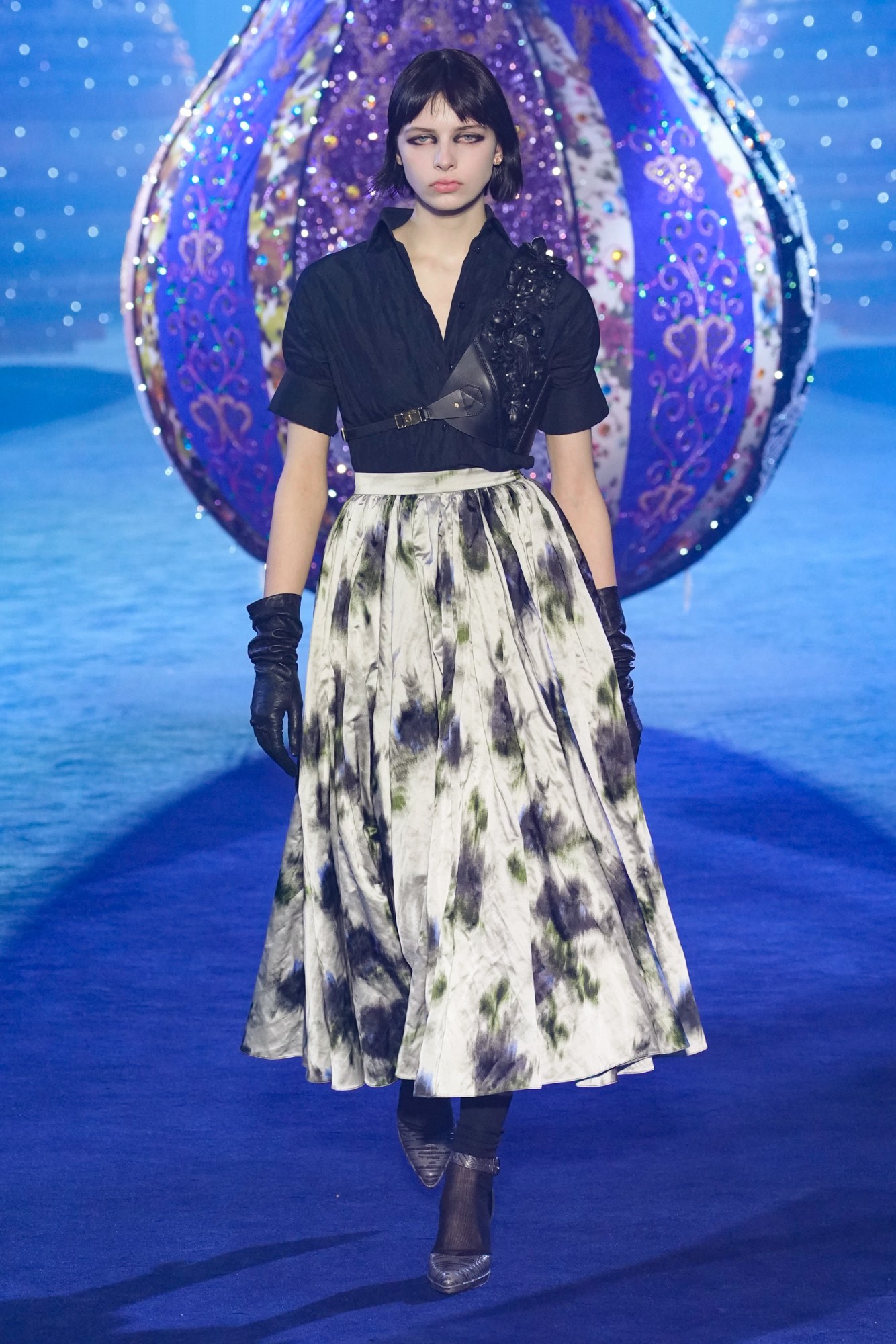

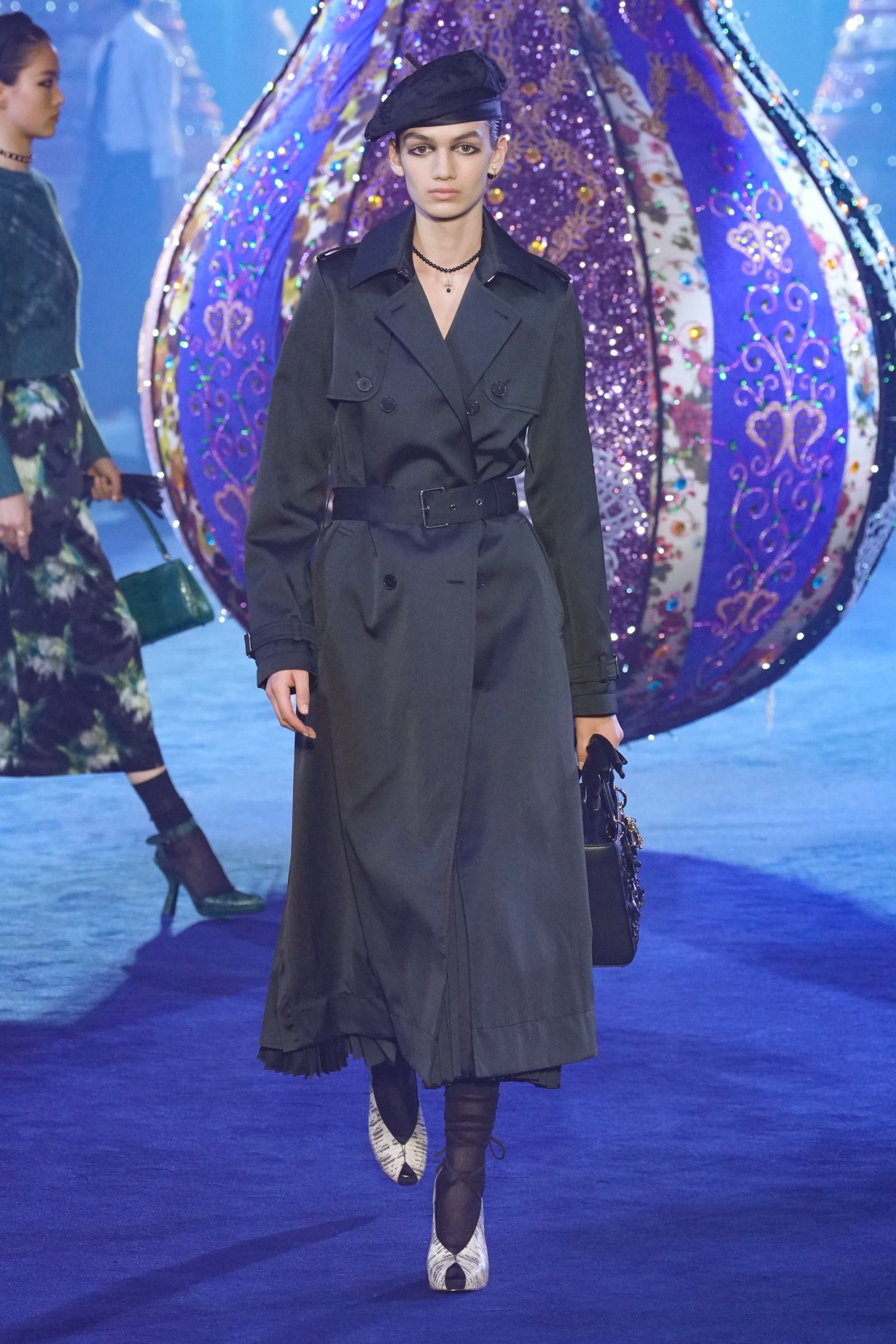
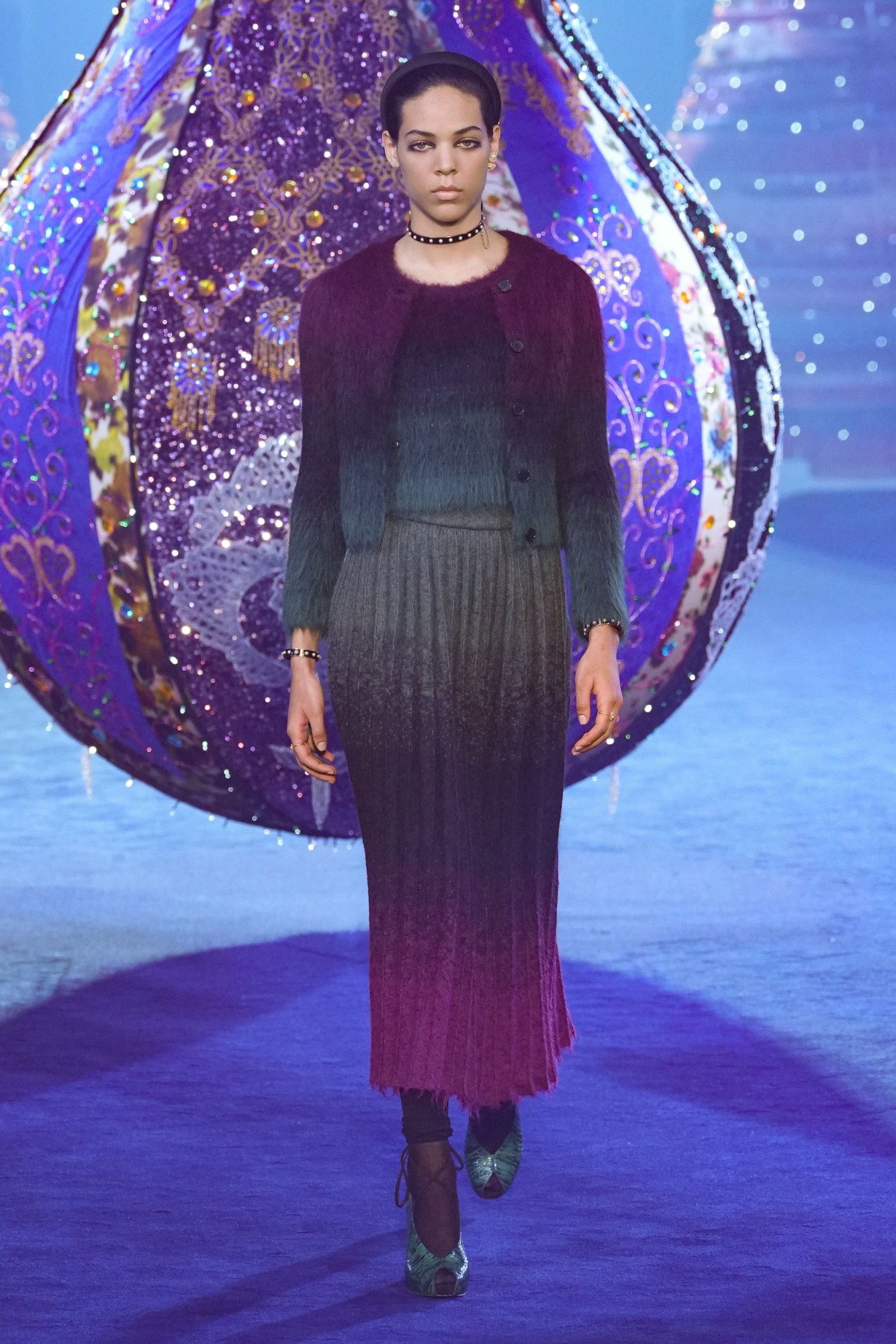

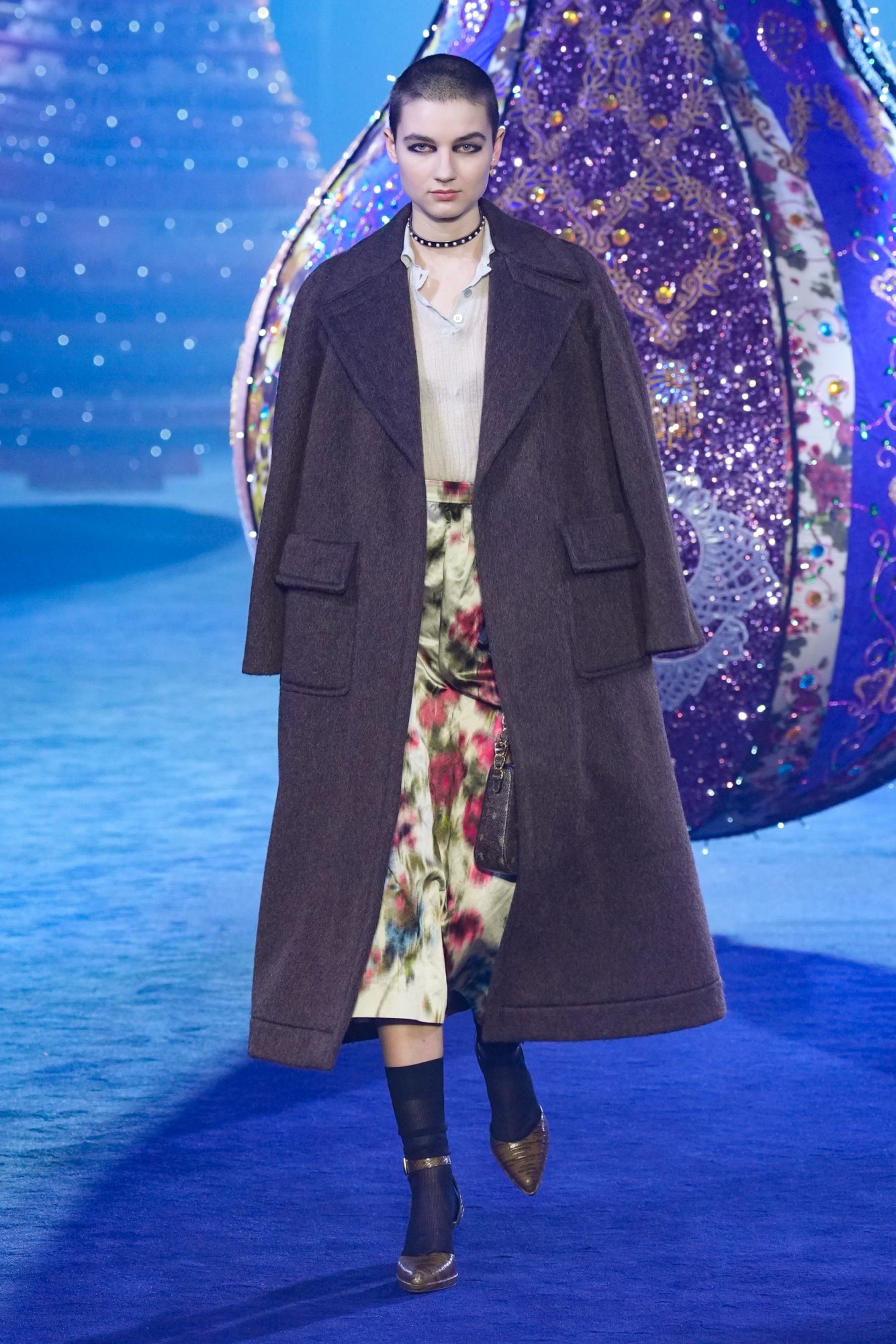
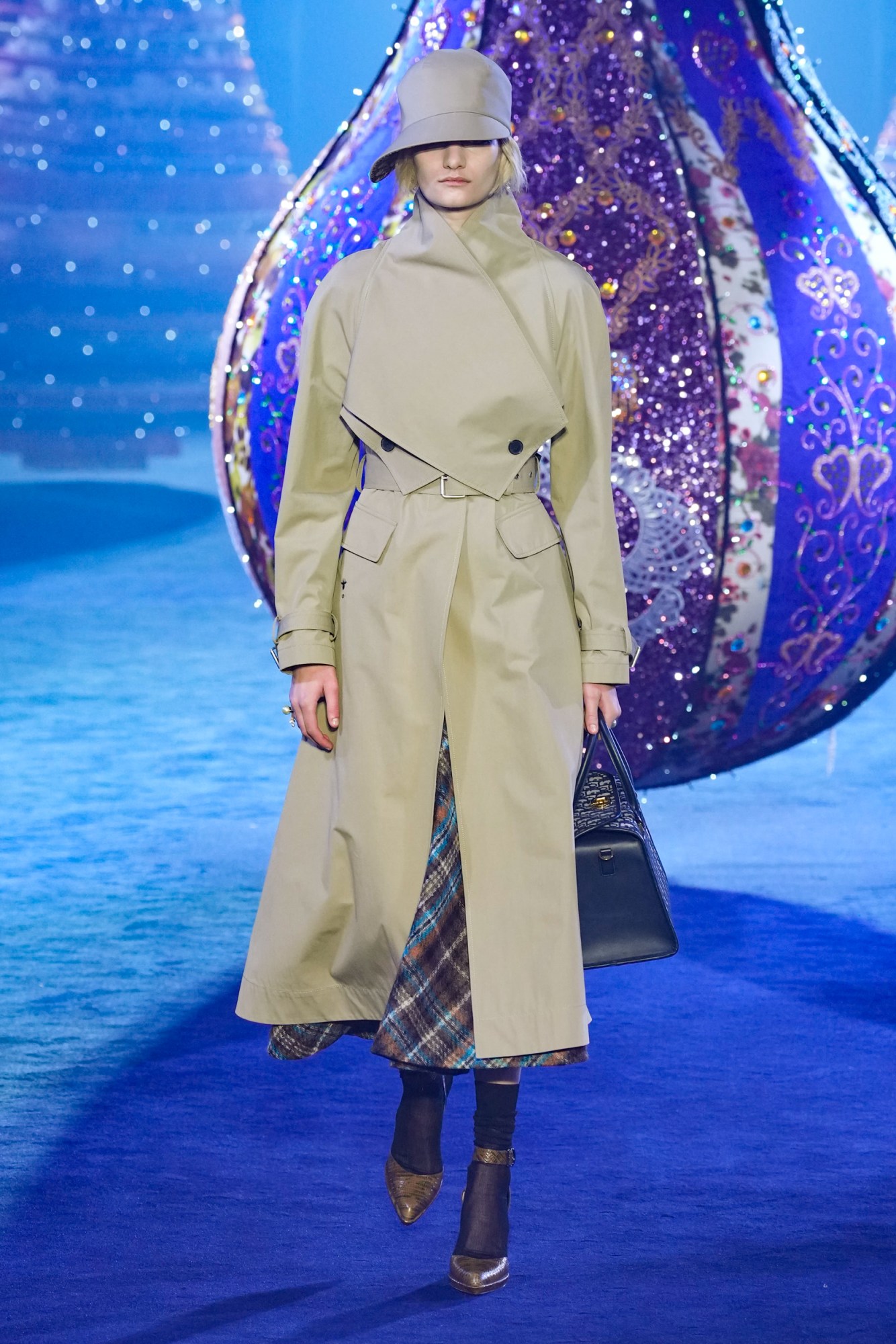
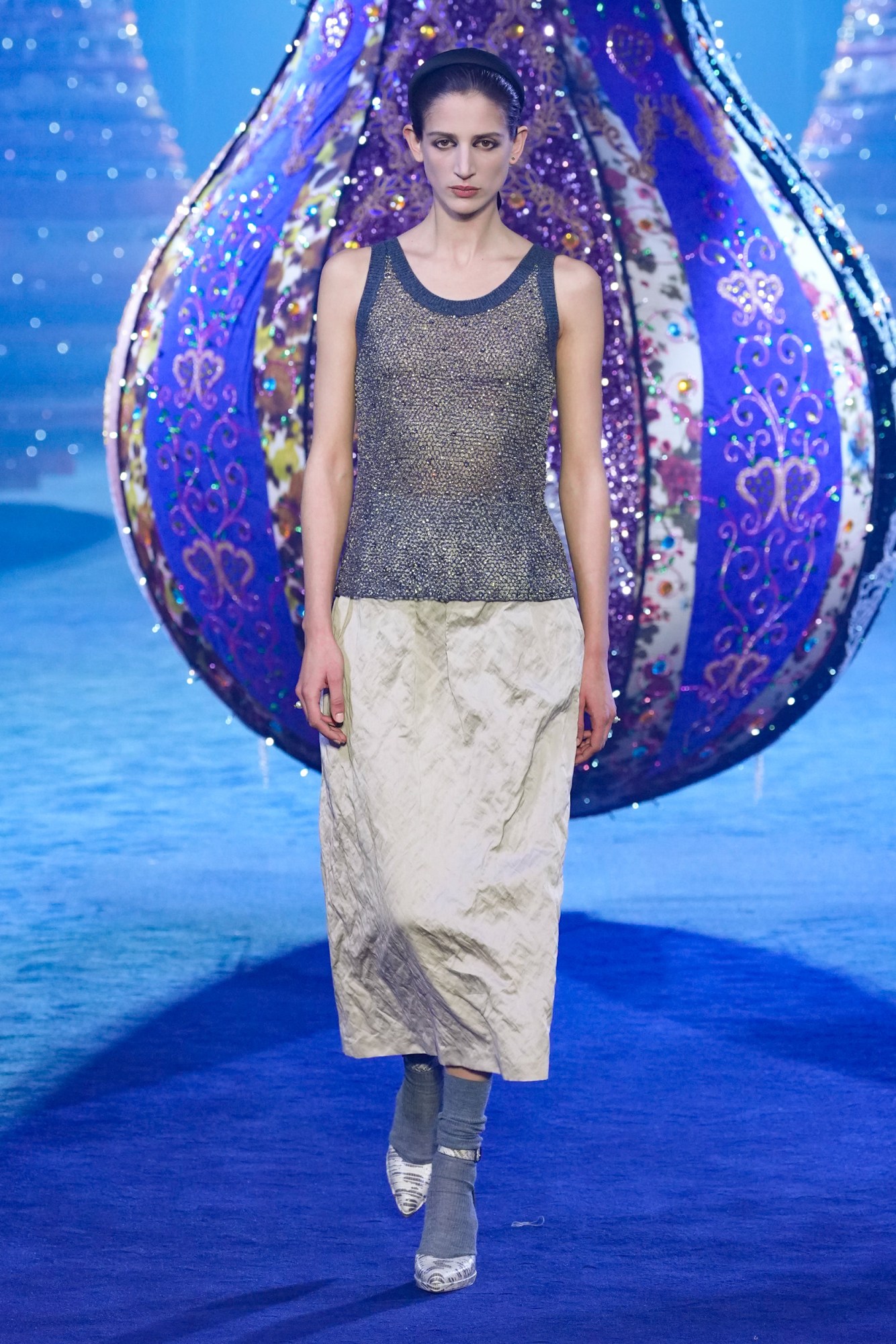
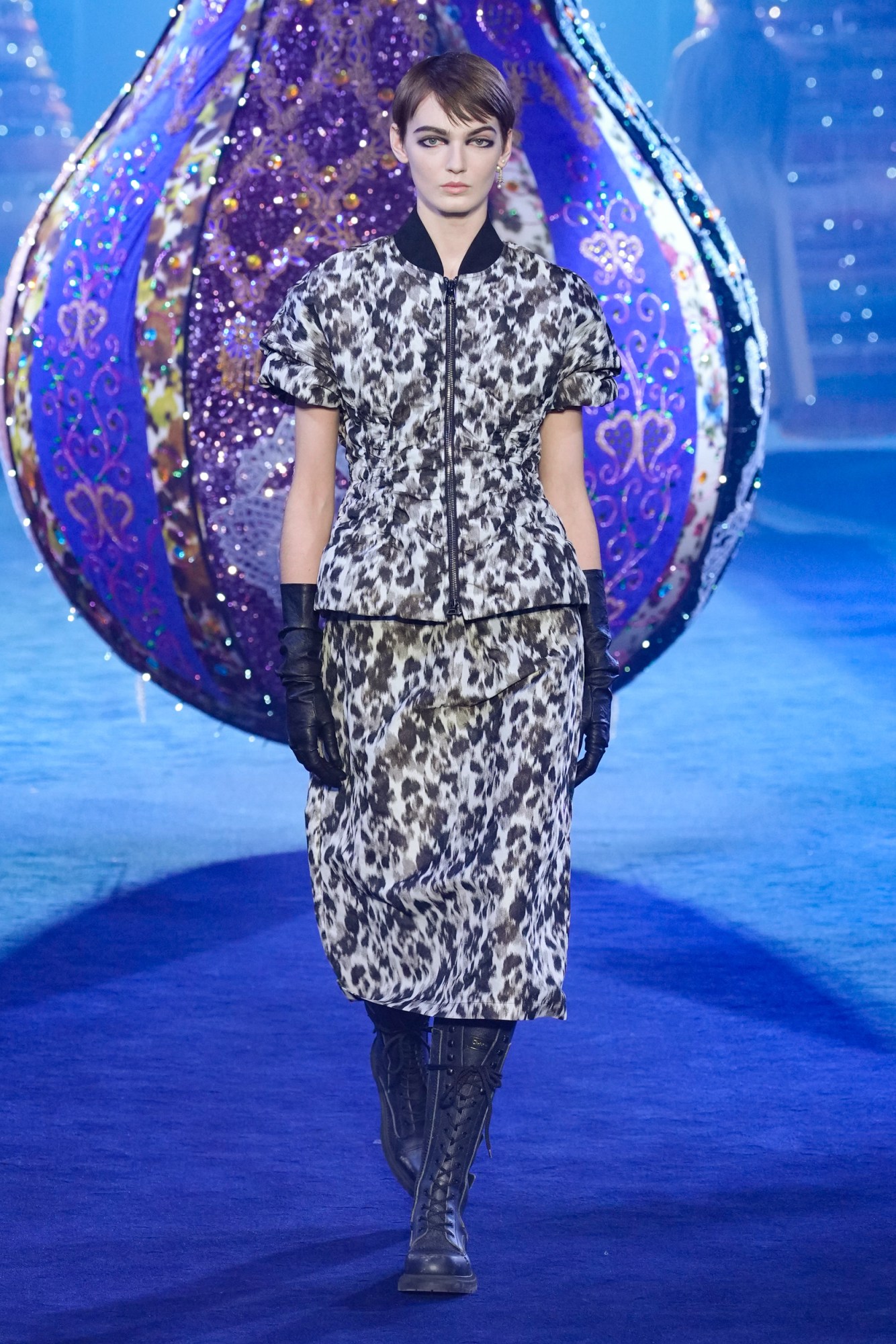
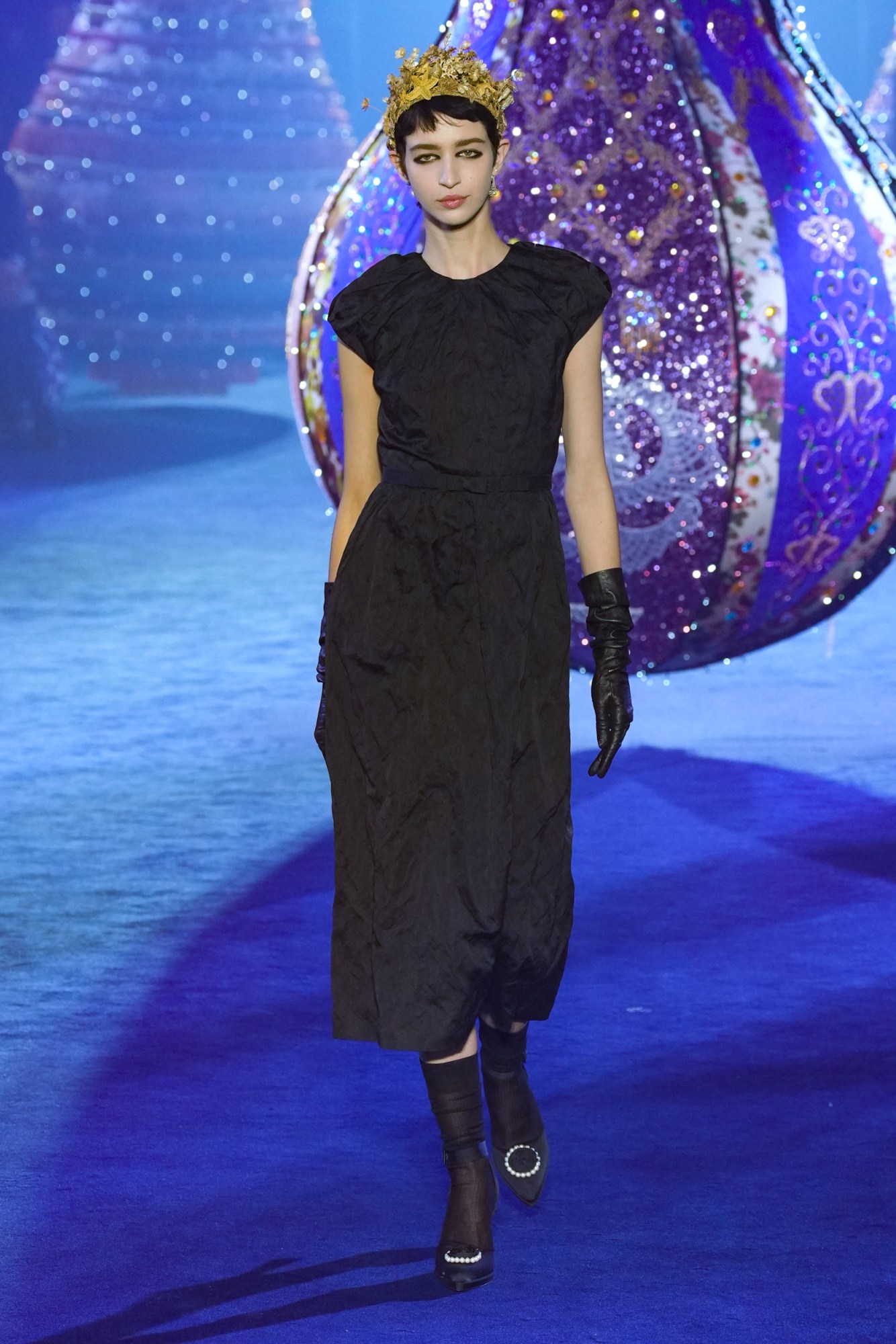
Credits
Images courtesy of Spotlight
